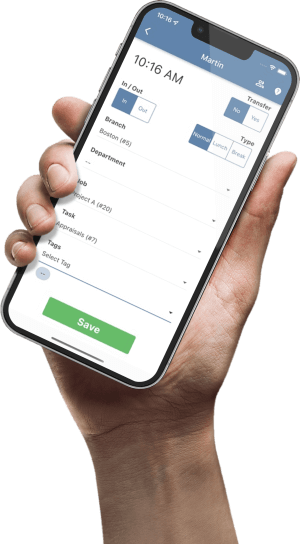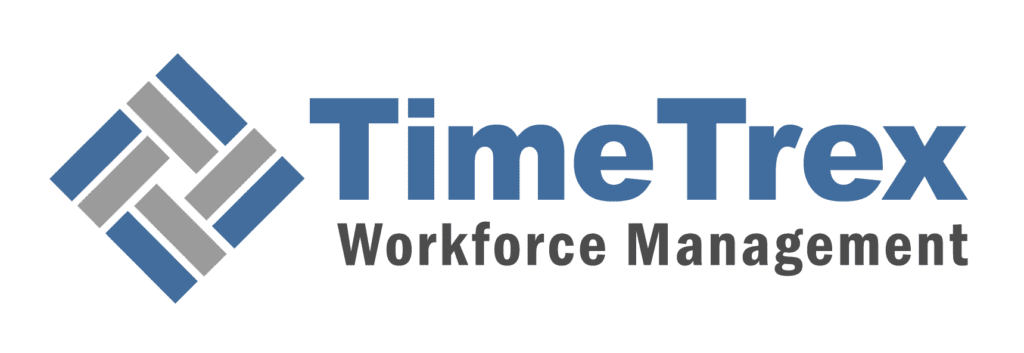
1000 Things to Know About Starting a Business in San Francisco: Part 3
With your business structure in place and an understanding of the market, funding, and taxes, Part 3 focuses on critical operational areas: managing your workforce according to California and San Francisco laws, mitigating risks through appropriate insurance, and protecting your valuable intellectual property.
Hiring & Managing Employees
Employing staff in California, and particularly San Francisco, involves navigating a complex web of labor laws. Compliance is crucial to avoid significant penalties.
California Labor Law Essentials
Employers must be aware of several key state and local requirements:
- Minimum Wage: Comply with the highest applicable rate. San Francisco often mandates a higher local minimum wage than the California state minimum (check the current SF rate with the Office of Labor Standards Enforcement - OLSE).
- Overtime: Non-exempt employees generally receive 1.5x pay for hours over 8/day or 40/week, and the first 8 hours on the 7th consecutive day. Double time applies for hours over 12/day or over 8 on the 7th day. Accurate hour tracking and classification (exempt vs. non-exempt) are vital.
- Meal Periods: Generally provide unpaid, duty-free 30-minute meal breaks for shifts over 5 hours (a second for shifts over 10 hours). Failure can result in penalties.
- Rest Periods: Authorize and permit paid 10-minute rest periods for every 4 hours worked (or major fraction).
- Paid Sick Leave: Comply with San Francisco's Paid Sick Leave Ordinance (PSLO), which often exceeds state requirements. Check SF OLSE for current accrual, cap, and usage rules for employee/family care or safety leave.
- Family and Medical Leave: Understand the California Family Rights Act (CFRA - 12 weeks unpaid leave for employers with 5+ employees), Pregnancy Disability Leave (PDL), and San Francisco's Paid Parental Leave Ordinance (PPLO - requires supplemental pay for employees on PFL bonding leave for employers with 20+ employees).
- Wage Payment & Pay Stubs: Pay wages at least twice monthly on designated paydays. Provide detailed, itemized wage statements (pay stubs) meeting specific content requirements. The Wage Theft Protection Act requires written pay notice at hire.
- Final Wage Payment: Strict deadlines apply. Terminated employees must receive final pay (including accrued vacation/PTO) immediately. Resigning employees are paid on their last day (if 72+ hrs notice) or within 72 hours (if less notice). Waiting time penalties apply for non-compliance.
- Expense Reimbursement: Reimburse employees for all reasonable and necessary business expenses (e.g., mileage, supplies).
- Lactation Accommodation: Provide reasonable break time and a private space (not a bathroom) for expressing breast milk.
- Required Workplace Postings: Display numerous federal, state, and SF-specific posters (wage/hour, safety, discrimination, leave, workers' comp, UI/SDI, HCSO, FCO) in applicable languages.
- Employee Handbook: Highly recommended (though not always legally mandated) to clearly communicate policies, procedures, benefits, expectations, and required notices, ensuring consistency and reducing disputes.
Worker Classification (Employee vs. Independent Contractor)
This is a critical compliance area with major consequences for misclassification.
- California's ABC Test: State law presumes a worker is an employee unless the hiring entity proves *all three* conditions:
- The worker is free from the control and direction of the hiring entity regarding work performance.
- The worker performs work outside the usual course of the hiring entity's business.
- The worker is customarily engaged in an independently established trade, occupation, or business of the same nature as the work performed.
- Exempt vs. Non-Exempt Status: Within the employee category, correctly classify workers as either "exempt" (salaried, meeting strict salary/duty tests for managers, professionals, etc.) or "non-exempt" (typically hourly, entitled to overtime, meal/rest breaks). Misclassification leads to liability for unpaid overtime.
Mandatory Trainings
- Sexual Harassment Prevention: California law requires employers with 5+ employees to provide training (2 hours for supervisors, 1 hour for non-supervisors) within 6 months of hire/promotion and every 2 years. Must cover specific topics including gender identity/expression and sexual orientation.
Workers' Compensation Insurance
- Mandatory Coverage: California requires *all* employers (even with one employee) to carry workers' compensation insurance. This is non-negotiable.
- Purpose: Provides benefits (medical, wage replacement, etc.) to employees for job-related injuries/illnesses, protecting both workers and the business from direct liability.
- Obtaining Coverage: Purchase a policy from a licensed California insurer or get state certification for self-insurance (impractical for most small businesses).
- Compliance & Proof: Maintain continuous coverage and provide proof (Certificate of Insurance) when required (e.g., for contractor licenses via CSLB). Failure leads to severe penalties (fines, stop-work orders, license suspension).
- Cost Factors: Premiums depend on industry risk, payroll, and claims history (ex-mod). Pay-as-you-go options may help cash flow.
Hiring Practices & Fair Chance Ordinance (FCO)
- Anti-Discrimination: Comply with California's Fair Employment and Housing Act (FEHA), prohibiting discrimination based on protected characteristics (race, gender, age, disability, etc.).
- Salary History Ban: Cannot ask applicants about salary history or use it in hiring/pay decisions.
- San Francisco Fair Chance Ordinance (FCO): Applies to employers with 5+ employees worldwide operating in SF. Key requirements include:
- Delaying criminal history inquiries until after a conditional job offer.
- Not considering certain records (non-convictions, old/expunged convictions, juvenile records) with limited exceptions.
- Including specific language in job postings about considering qualified applicants with records.
- Performing an individualized assessment (offense nature, time passed, job relevance) before adverse action.
- Providing notice and opportunity to respond before finalizing adverse action.
- Posting the official FCO notice and providing copies to applicants. Check SF OLSE for details.
- New Hire Reporting: Report all new hires/rehires to the EDD's California New Employee Registry within 20 days of start date (used for child support enforcement). Some reporting needed for independent contractors too.
Insurance & Risk Management
Beyond mandatory workers' comp, several types of insurance are essential for protecting your business from various risks.
| Insurance Type | Primary Purpose |
|---|---|
| General Liability (CGL) | Protects against third-party claims for bodily injury, property damage, or personal/advertising injury occurring on premises or due to operations. Often required for leases/contracts. |
| Professional Liability (E&O) | Essential for service/advice providers. Covers financial loss claims due to negligence, errors, omissions, or failure to perform professional duties. Includes defense costs. |
| Cyber Liability | Covers costs associated with data breaches/cyberattacks (notification, recovery, legal defense, business interruption, regulatory fines). Increasingly critical; requires strong security practices for underwriting. |
| Business Owner's Policy (BOP) | Bundles CGL and Commercial Property insurance (protects physical assets like equipment, inventory). Often includes Business Interruption coverage. Suited for many small/medium businesses. |
| Commercial Auto | Required for business-owned vehicles. Covers liability and vehicle damage. Hired and Non-Owned Auto (HNOA) is crucial if employees use personal cars for work. |
| Employment Practices Liability (EPLI) | Protects against employee claims like discrimination, harassment, wrongful termination. |
| Directors & Officers (D&O) | Protects personal assets of directors/officers from lawsuits over management decisions. Important for corporations, especially those seeking investment. |
| Fidelity Bonds / Commercial Crime | Protects against losses due to employee dishonesty (theft, embezzlement). |
General Liability Insurance (CGL)
This fundamental coverage protects against claims from third parties for injuries or damages. Limits of $500k-$1M per occurrence are often recommended for small businesses in California. Costs vary by risk, but averages can be relatively affordable.
Professional Liability Insurance (Errors & Omissions - E&O)
Crucial for businesses providing services or advice (consultants, tech services, accountants, etc.). Covers financial losses caused by professional mistakes or negligence. Includes legal defense costs, even for unfounded claims.
Cyber Liability Insurance
Increasingly vital due to rising cyber threats (ransomware, data breaches). Covers costs like data recovery, notification, legal fees, business interruption, and potential fines. Insurers now demand strong cybersecurity practices (MFA, EDR, backups, training, incident response plan) as a prerequisite for coverage or reasonable premiums.
Business Owner's Policy (BOP)
Combines General Liability and Commercial Property insurance, often including business interruption coverage. A cost-effective package for many small/medium businesses.
Other Potential Insurance Coverages
Consider Commercial Auto (mandatory for business vehicles, consider HNOA), Employment Practices Liability (EPLI), Directors & Officers (D&O) for corporations, and Fidelity Bonds/Commercial Crime insurance based on your specific risks and operations.
Protecting Intellectual Property
Your innovations, brand, and creative works are valuable assets. Understanding and securing Intellectual Property (IP) rights is crucial, especially in an innovation hub like San Francisco.
Understanding IP Types
| IP Type | What it Protects | How to Secure (Formal) | Typical Duration |
|---|---|---|---|
| Patents (Utility, Design, Plant) | Inventions (how things work, ornamental appearance, new plants). Grants exclusive rights to make, use, sell. | Application & Examination by USPTO. Complex & costly. Provisional Patent Application (PPA) offers 1-year placeholder. | Typically 20 years from filing (utility), 15 years from grant (design). Maintenance fees required. |
| Trademarks | Brand identifiers (names, logos, slogans) distinguishing goods/services source. Prevents consumer confusion. | Use in commerce creates common law rights. Federal Registration with USPTO provides stronger, nationwide rights. Requires search & application. | Potentially indefinite, as long as used commercially and maintained (periodic renewals). |
| Copyrights | Original works of authorship fixed in tangible form (software code, website content, articles, music, designs). Protects expression, not idea. | Protection is automatic upon creation. Registration with U.S. Copyright Office needed to sue for infringement and allows statutory damages/fees. | Life of the author + 70 years (or 95/120 years for corporate works). |
| Trade Secrets | Confidential business info providing competitive edge (formulas, customer lists, processes, algorithms). | No registration. Requires active, reasonable efforts to maintain secrecy (NDAs, access controls, training, secure storage). | Indefinite, as long as kept secret and provides value. |
Securing Protection
- Patent Process: Involves prior art search, detailed application drafting (usually by patent attorney), USPTO filing and examination (can take years), and significant costs ($10k+). A Provisional Patent Application (PPA) provides a lower-cost, 12-month "patent pending" status to secure an early filing date while testing viability. "Patent pending" warns others but offers no direct legal protection itself.
- Trademark Process: Conduct thorough search (USPTO TESS database), file application specifying mark and goods/services. Federal registration provides stronger rights than common law use. Maintenance required.
- Copyright Process: Protection is automatic, but registration is needed to enforce rights in court effectively. Involves application, fee, and depositing a copy of the work.
- Trade Secret Strategy: Relies on proactive confidentiality measures: Non-Disclosure Agreements (NDAs), limiting access, employee training, marking documents, secure storage.
Strategic Considerations for Startups
- IP Audit: Regularly assess your innovations and brand assets to identify what needs protection.
- Ownership Agreements: Ensure clear IP ownership, especially with founders, employees, and contractors (work-for-hire/assignments).
- Cost vs. Benefit: Balance the cost/complexity of formal protection (esp. patents) against business value and risk. Trade secrets can be cost-effective if secrecy is maintainable. Often a mix (NDAs, trade secrets, copyrights, trademarks, selective patents) is best.
- Freedom to Operate (FTO): Analyze existing patents before launch to minimize infringement risk.
- Legal Counsel: Engage experienced IP attorneys, particularly those familiar with tech/California law, for strategy, filing, and enforcement.
Sources
- When Should Your California Business Hire an HR Professional?https://www.californiaemploymentlawreport.com/2025/02/when-should-your-california-business-hire-an-hr-professional/
- California Labor Laws: What Small Business Owners Need to Knowhttps://www.californialaborsolutions.com/california-labor-laws-what-small-business-owners-need-to-know/
- 2023 California Labor Laws: Complete Guide for Business Ownershttps://huckleberry.com/blog/simple-guide-to-california-labor-laws/
- California Labor Law - California Chamber of Commercehttps://www.calchamber.com/california-labor-law
- Health Care Security Ordinance | SF.govhttps://www.sf.gov/information--health-care-security-ordinance
- Fair Chance Ordinance | SF.govhttps://www.sf.gov/information--fair-chance-ordinance
- California (CA) Small Business Insurance | Hiscoxhttps://www.hiscox.com/small-business-insurance/california-business-insurance
- Workers' Compensation Requirements - CSLB - CA.govhttps://www.cslb.ca.gov/contractors/maintain_license/workers_compensation.aspx
- California Business Insurance, General Liability Insurance | TechInsurancehttps://www.techinsurance.com/small-business-insurance/states/california
- California Workers' Compensation Insurance: 2025 Cost & Requirements - Simply Businesshttps://www.simplybusiness.com/business-insurance/workers-compensation-insurance/california/
- Fair Chance Ordinance (FCO) Overview - SF.govhttps://www.sf.gov/sites/default/files/2023-10/Fair%20Chance%20Ordinance%20Overview.pdf
- Cyber Insurance Trends – Navigating Coverage... 2025 Privacy Breach Insights – Part 5 | McCarthy Tétraulthttps://www.mccarthy.ca/en/insights/articles/cyber-insurance-trends-navigating-coverage-evolving-risk-landscape-2025-privacy-breach-insights-part-5
- Cyber Insurance Trends and Statistics to Know in 2025 - JumpCloudhttps://jumpcloud.com/blog/cyber-insurance-trends-statistics
- Intellectual Property Protection Guide for Tech Startups - L.A. Tech and Media Law Firmhttps://techandmedialaw.com/intellectual-property-protection/
- Intellectual Property for Startups: Protecting Your Work - American Public Universityhttps://www.apu.apus.edu/area-of-study/business-and-management/resources/intellectual-property-for-startups/
- Patent Pending in California: The Beginner's Guide - GIP Research & Consultancy Serviceshttps://gipresearch.com/patent-attorney/patent-pending-in-california-the-beginners-guide/
- Payroll Taxes - EDD - CA.govhttps://edd.ca.gov/en/payroll_taxes/
Disclaimer: The content provided on this webpage is for informational purposes only and is not intended to be a substitute for professional advice. While we strive to ensure the accuracy and timeliness of the information presented here, the details may change over time or vary in different jurisdictions. Therefore, we do not guarantee the completeness, reliability, or absolute accuracy of this information. The information on this page should not be used as a basis for making legal, financial, or any other key decisions. We strongly advise consulting with a qualified professional or expert in the relevant field for specific advice, guidance, or services. By using this webpage, you acknowledge that the information is offered “as is” and that we are not liable for any errors, omissions, or inaccuracies in the content, nor for any actions taken based on the information provided. We shall not be held liable for any direct, indirect, incidental, consequential, or punitive damages arising out of your access to, use of, or reliance on any content on this page.
About The Author

Roger Wood
With a Baccalaureate of Science and advanced studies in business, Roger has successfully managed businesses across five continents. His extensive global experience and strategic insights contribute significantly to the success of TimeTrex. His expertise and dedication ensure we deliver top-notch solutions to our clients around the world.
Time To Clock-In
Start your 30-day free trial!
Experience the Ultimate Workforce Solution and Revolutionize Your Business Today
- Eliminate Errors
- Simple & Easy To Use
- Real-time Reporting

Saving businesses time and money through better workforce management since 2003.
Copyright © 2025 TimeTrex. All Rights Reserved.
